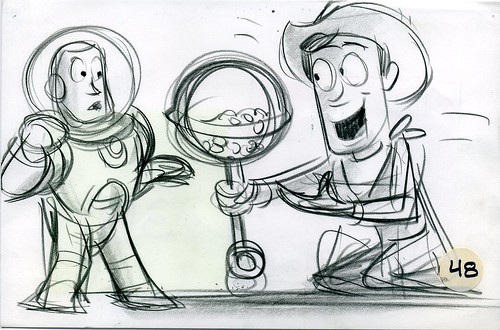
I've said it before and I'll say it again: the 90s were a simpler time. An age before text messaging, tweeting, and facebooking. A time when nations put aside their difference to battle in vaguely athletic harness-dependent events. A time when the greatest feat a kid could aspire to was to climb a giant heap of neon-lit scrap metal. A time when Mike O'Malley was still young and good-looking and not forever irritating me with his incessant plugs for Time Warner digital cable.
Yes, those were simpler times. Oh, how my friends and I yearned to be contestants on Nickelodeon GUTS. We were even willing to overlook that gross foamy yellow mouthguard we'd be required to wear. How's that for compromise? All we wanted was for British referee Mo to describe us by our chosen nicknames (I was partial to The Raging Tornado myself) and to describe our position on the coveted leaderboard.
Was that really so much to ask?
Unsurprisingly, this ambition never became a reality. Unless you count my boyfriend and I dressing up as a GUTS contestant and Mo respectively for Halloween. But I suppose you probably wouldn't, would you now.
There was nothing more I wanted in the world than to become one of these famed child athletes, immortalized for posterity in VHS form:
Unfortunately for me, the correct answer to "Do-do-do-do you have it?" was a resounding no. For three lucky kids per episode, though, this was their chance to shine. Literally. That snow that pelted them from the Aggro Crag was super sparkly.
Nickelodeon's GUTS ran from 1992-1995, with endless rerunning throughout the decade. The show was a sort of kid-based takeoff of the then immensely popular American Gladiators. Three kids competed against one another, clad respectively in their representative color of blue, red, or purple. Before each event got under way, individual contestants were interviewed (later, they aired pre-taped segments) in a little feature they liked to call "Spill Your Guts!"
The athletic events themselves took place in the Extreme(!) Arena, and were sometimes loosely related to actual sports. More often, they were elaborate tests of athleticism made possible through the use of harnesses, mouthguards, and well-placed safety nets. There were obstacle courses, wave pool events, and all sorts of extreme(!)-named events for the players to compete in. Mike O' Malley narrated, saying ridiculous things like, "He took to the water like a porpoise!" Then, for the official stuff, we cut to Mo.
Mo was a British referee/officiant who explained the leaderboards, points, and made official rulings on if a kid's toe was over the line. She also got to say official-sounding phrases like "Players will start at the sound of my whistle". First placers earned 300 points, second earned 200, and third earned a measly 100. Luckily for those kids, there were only 3 competitors, meaning everyone gets a medal.
 Our good pals Mo and the then immensely handsome Mike O'Malley. Am I alone in this childhood crush or what?
Our good pals Mo and the then immensely handsome Mike O'Malley. Am I alone in this childhood crush or what?Contestants were to activate the "actuators", which really just meant they were supposed to turn on some crappy touch light as they bounded up the almighty Crag. You have to admit, "actuators" sounds way cooler. Each third of the Crag was swathed in colored light corresponding to each player's representative color. This sounds like a pretty easy if completely unnecessary task, but the show threw in some special effects-type obstacles to sweeten things up. Avalanches, glittery snowstorms, flashes of lightning, and even nuclear flying crystals. Yep, that's right: nuclear flying crystals. Just like climbing a real mountain.
The first kid to the top of the Aggro Crag received 725 point, most often nullifying all of those other pointless preceding events. There was an eviable awards ceremony in which the competitors received their inevitable medals and the gold medal-winner was given a piece of the Aggro Crag. Admittedly, this plutonium-esque hunk of plastic looked pretty dissimilar to the Crag itself, but it was still arguably the most coveted piece of neon green plastic around.
To illustrate the desirability of taking home a piece of the crag, do a little Google search for something along the lines of "buy a piece of the aggro crag". On eBay, the site even comes up with alternative search suggestions for you, implying that numerous people search for "piece of the crag" and then follow that up with "GUTS aggro crag." These now-grown ups are still dying to get their hands on a piece of the crag. You know what they say: if you can't beat 'em, buy 'em.

In 1994, Nickelodeon produced an Olympic-style spinoff of the show entitled Global Guts, pitting kids from different countries against one another in a battle to prove superiority at Extreme Dodgeball and Wave Pool Kayaking. It's a competitive field, I know, so these segments were pretty tense. Kids came from places like Israel and Kazakhstan to prove their worth and earn a piece of the almighty Crag (by now, in Super form). Not only did this did the international competition add a new element to the show (particularly when we battled the forces of former communism on the rock climbing wall), the winner got to do a sweet flag-flying victory lap as well. Talk about doing your country proud.
Sure, Nickelodeon brought back a version of it as My Family's Got GUTS in 2008, but the era had passed. For the children of the 90s, that is. Those of us with as-of-yet-unrealized dreams of bringing home a piece of the Crag will suffer forever from unrequited semi-athletic accomplishments. Unless one of you happens to find a piece of it on eBay, that is.








